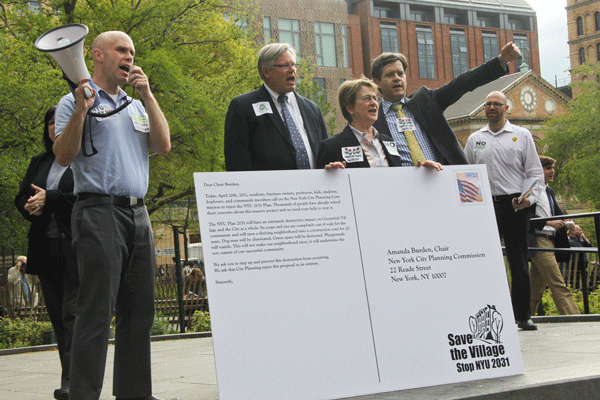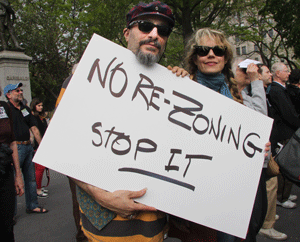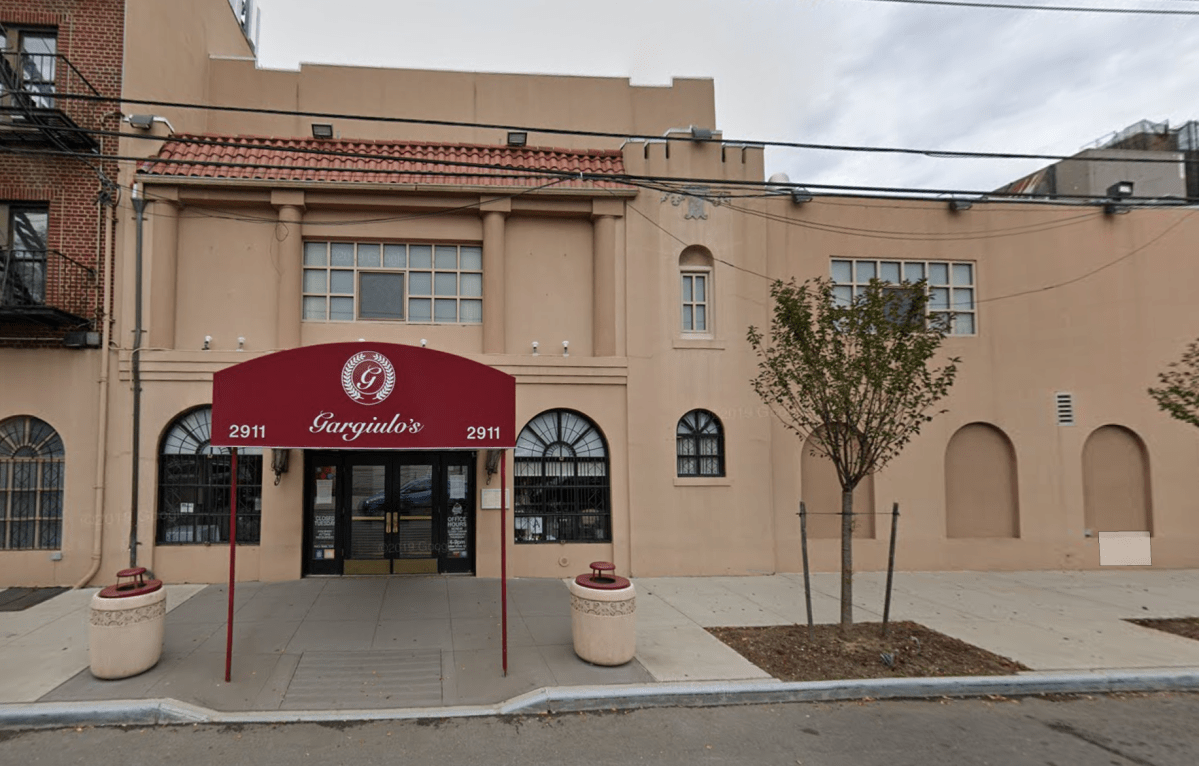BY ANDREW BERMAN | PRESERVATION | As the old saying goes, when it rains it pours. Our neighborhoods have either just finished, are in the middle of, or are about to embark upon no less than four rezonings. Rezonings change the rules regarding what can or can’t be built in an area and how big it can be. Community-initiated rezonings are often geared toward reinforcing neighborhood character and limiting the size, height and type of new development. Developer-initiated rezonings are often geared toward increasing the amount and scale of what can be built, sometimes allowing previously prohibited development to take place.
All four of these rezonings have been initiated by developers or N.Y.U., one of the city’s largest private institutions and, for all intents and purposes, a developer, too. Collectively these rezonings have the potential to add millions of square feet of new development to our neighborhoods, and dramatically transform their character.
Earlier this year Rudin Management’s rezoning of the former St. Vincent’s Hospital’s east campus was approved by the City Council, City Planning Commission and borough president. The rezoning lifted previous restrictions on uses for the site and increased the size and scale of allowable residential development. The Greenwich Village Society for Historic Preservation and many others objected to the proposed rezoning; we felt strongly that privileges given to a hospital in 1979 to allow extra-large development on the site should not then be granted to a private condo developer. City officials disagreed, granting Rudin the upzoning it requested.
In early April the application by Jamestown Properties to rezone Chelsea Market in order to allow the construction of a large office tower above the complex’s 10th Ave. end and a hotel structure above the Ninth Ave. end was filed, starting the seven-month public review and approval process. There has been significant public outcry against the plan, which would forever alter the look of this historic complex, add traffic to the neighborhood, cast a shadow over the High Line and loom over the adjacent Gansevoort Market Historic District, and further tip the balance of this neighborhood toward commercialization. G.V.S.H.P. strongly opposes the rezoning, which is under review by Community Board 4, to be followed by the borough president, City Planning Commission and City Council.

Trinity Realty is expected to file its application to rezone about 20 blocks in Hudson Square in May. Here, community groups including G.V.S.H.P. had long sought a rezoning, but instead of allowing a community-initiated rezoning to move ahead, the city has let Trinity, which owns about 40 percent of the land in the area, to file the application. Unlike in some other cases, a rezoning is clearly needed here: The current zoning allows buildings 450 feet tall or more — such as the Trump Soho — and encourages hotel development and towers set back behind street-deadening plazas. As for Trump Soho, we believe other aspects of the zoning that the city refused to enforce should have blocked this project.
However, Trinity’s draft rezoning proposal doesn’t necessarily address all community concerns. Trinity’s plan would still allow buildings up to 320 feet, and in one case 430 feet in height, much higher than almost any building in the neighborhood except the Trump Soho. Plus, the rezoning would clearly increase development activity in the area and thus increase development pressure on the adjacent remaining sections of the proposed South Village Historic District, which the city has refused to landmark.
G.V.S.H.P. and local community groups held a community forum on the plan and found that there was strong support for lowering the proposed height and bulk of new development and for insisting that this developer-requested rezoning not move ahead unless the community-requested landmark designation of the adjacent South Village is also considered. We have urged city officials to take these steps.
Another proposed rezoning with the potential to endanger the adjacent proposed South Village Historic District (and a whole lot more) is N.Y.U.’s plan for eight city blocks south and east of Washington Square. The university would not only impose commercial zoning on a residentially zoned area, but lift open-space preservation requirements now in the zoning, which would allow the university to add more than 2 million square feet of space where it is currently prohibited. Additionally, N.Y.U. wants the city to give it public land now used as park space and to overturn urban renewal deed restrictions limiting development. Everything about N.Y.U.’s plan flies in the face of the terms under which the university was given acres of public land in the 1950s and ’60s that it now wishes to build upon, as well as long-standing neighborhood zoning protections.
As disturbing as these changes would be in principle, their practical effect would be devastating. Huge new buildings would permanently encase open space in shadow. The N.Y.U. presence — not just in the immediate vicinity but for blocks around — would continue to grow over the years, with N.Y.U. becoming an ever-more overwhelming presence in the neighborhood. The design of two modernist housing complexes, Washington Square Village and Silver Towers, both eligible for the State and National Registers of Historic Places and one landmarked, would be destroyed.
Borough President Stringer voted to approve the N.Y.U. plan with minor modifications. The City Planning Commission and the City Council, however, will have final say on the plan.
Though the city designated the first third of G.V.S.H.P.’s proposed South Village Historic District in 2010, it has demurred on the remaining two-thirds, prompting the Preservation League of New York State to join G.V.S.H.P. in calling the neighborhood one of our state’s most endangered historic resources, and urging the city to act to protect it. And the city has moved slowly to expand landmark protections in the East Village, allowing numerous historic houses to be demolished or otherwise compromised while new historic districts are being considered.
This year will clearly set the stage for changes that will affect what our neighborhoods look and feel like for generations to come.
Berman is executive director, Greenwich Village Society for Historic Preservation



















